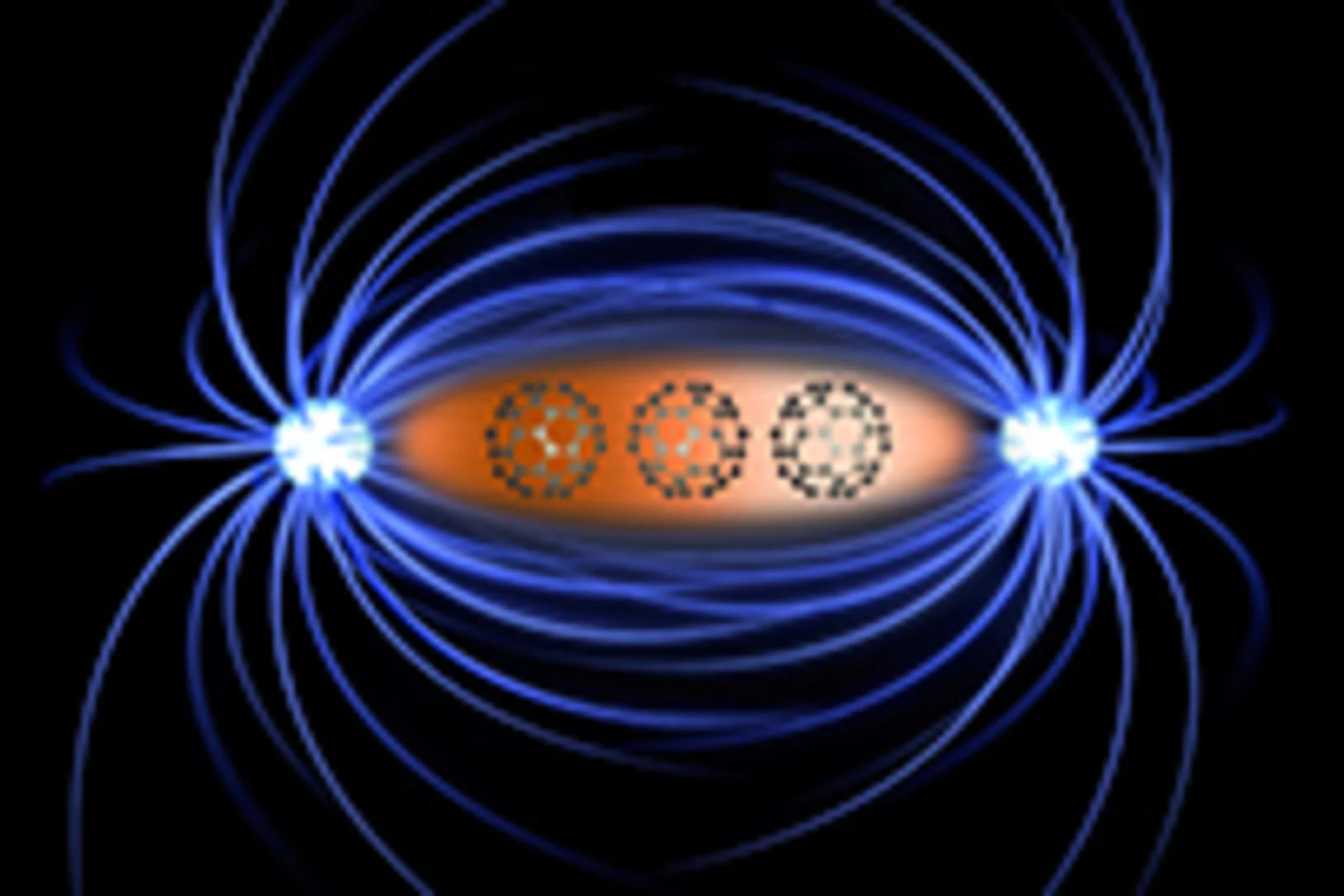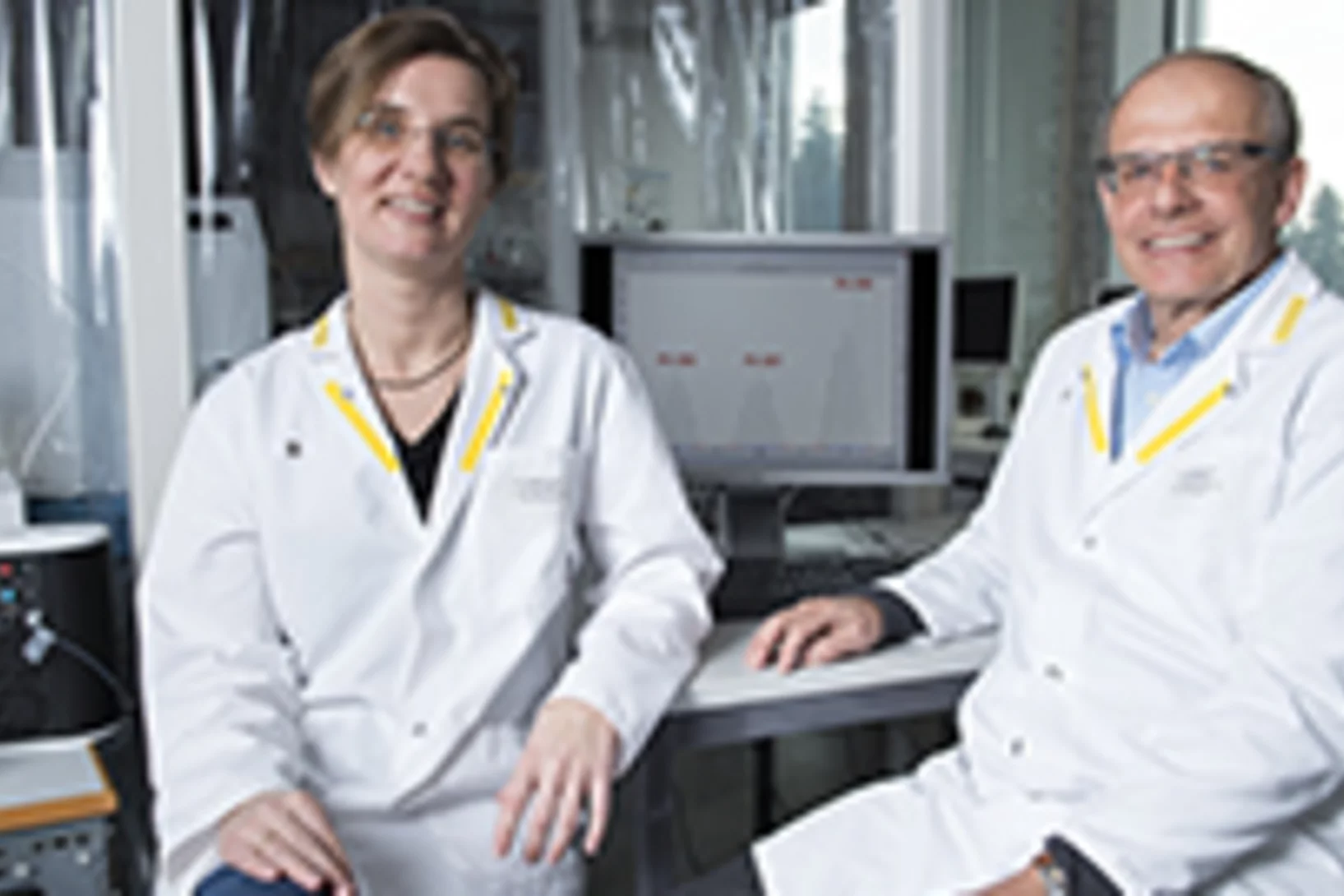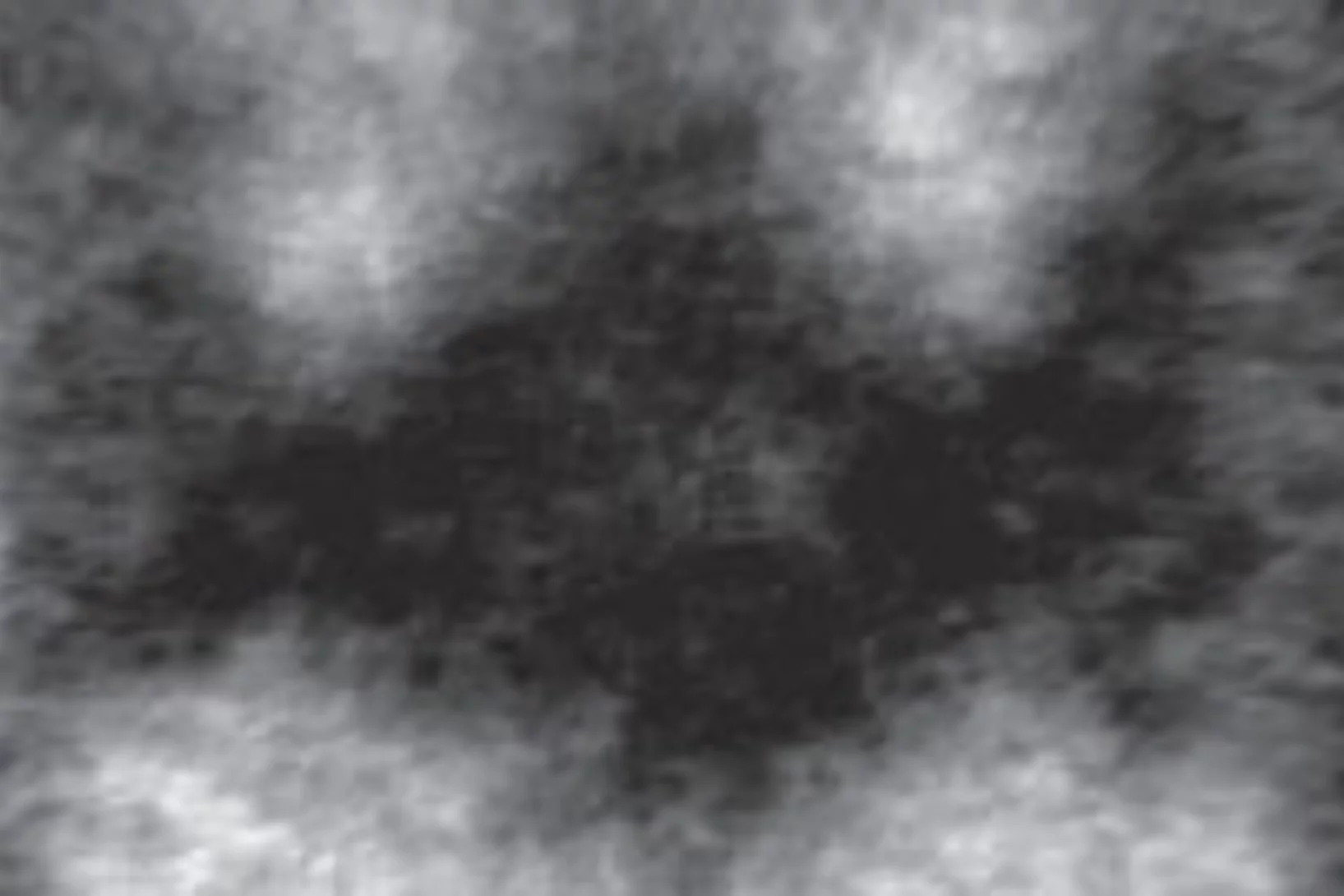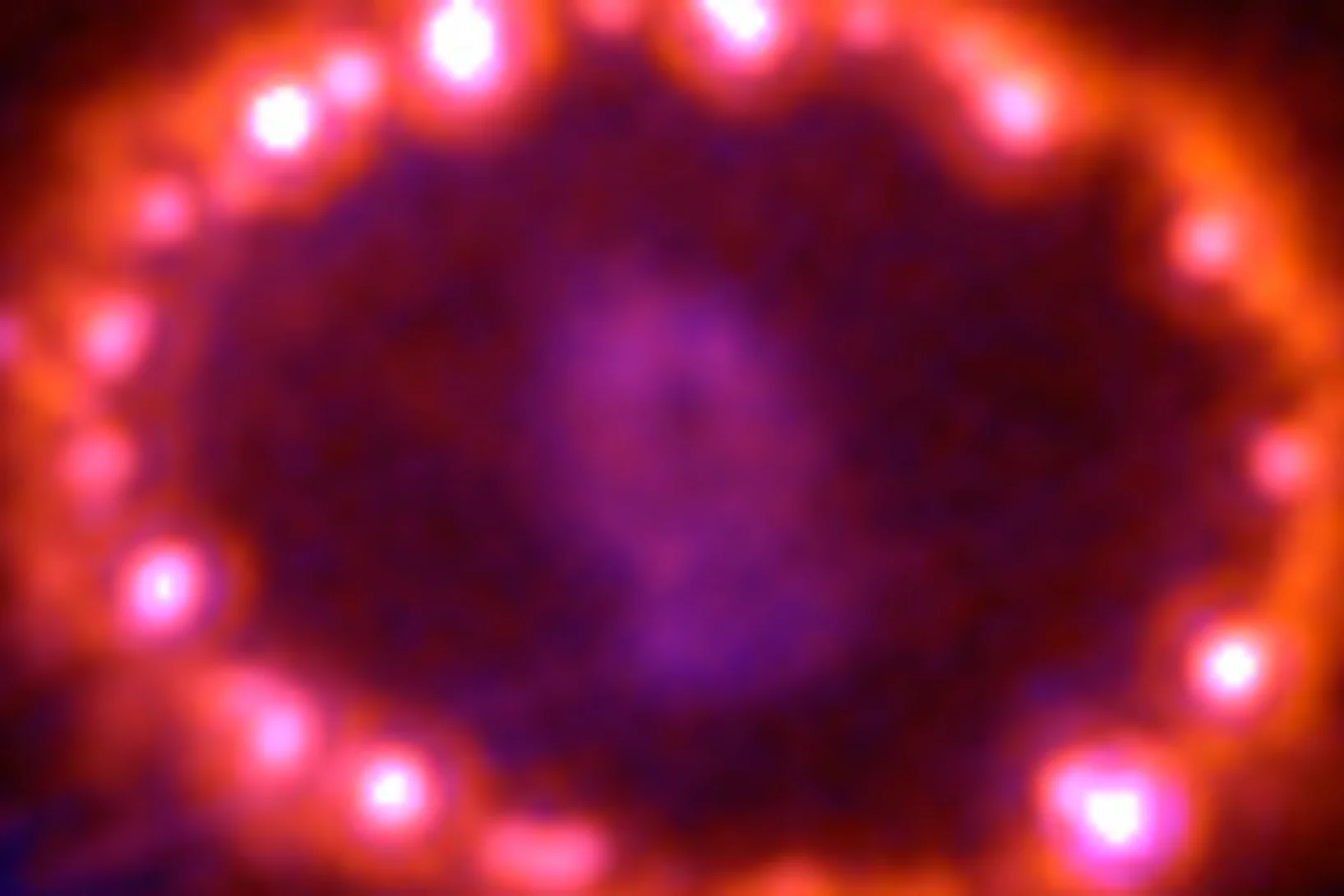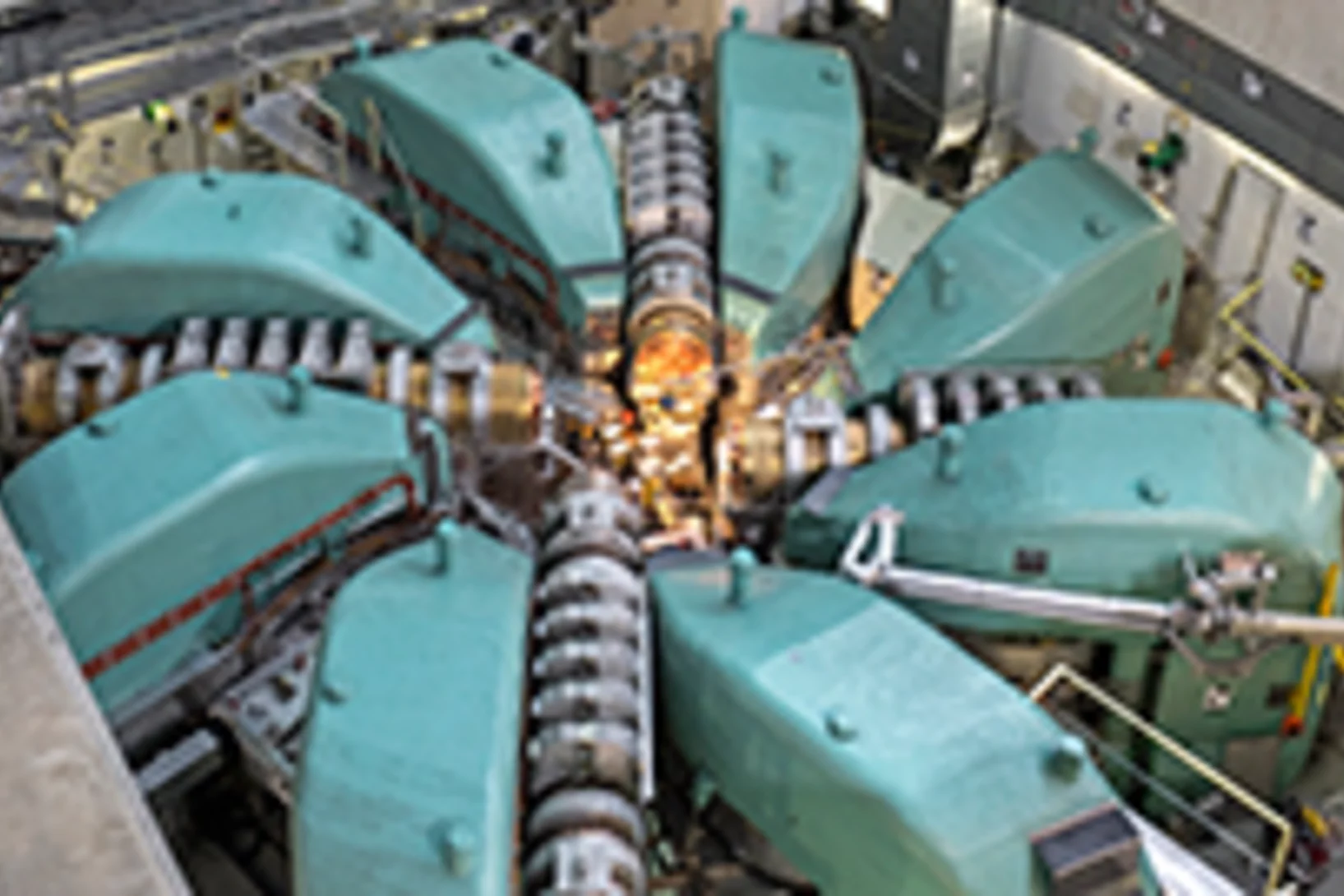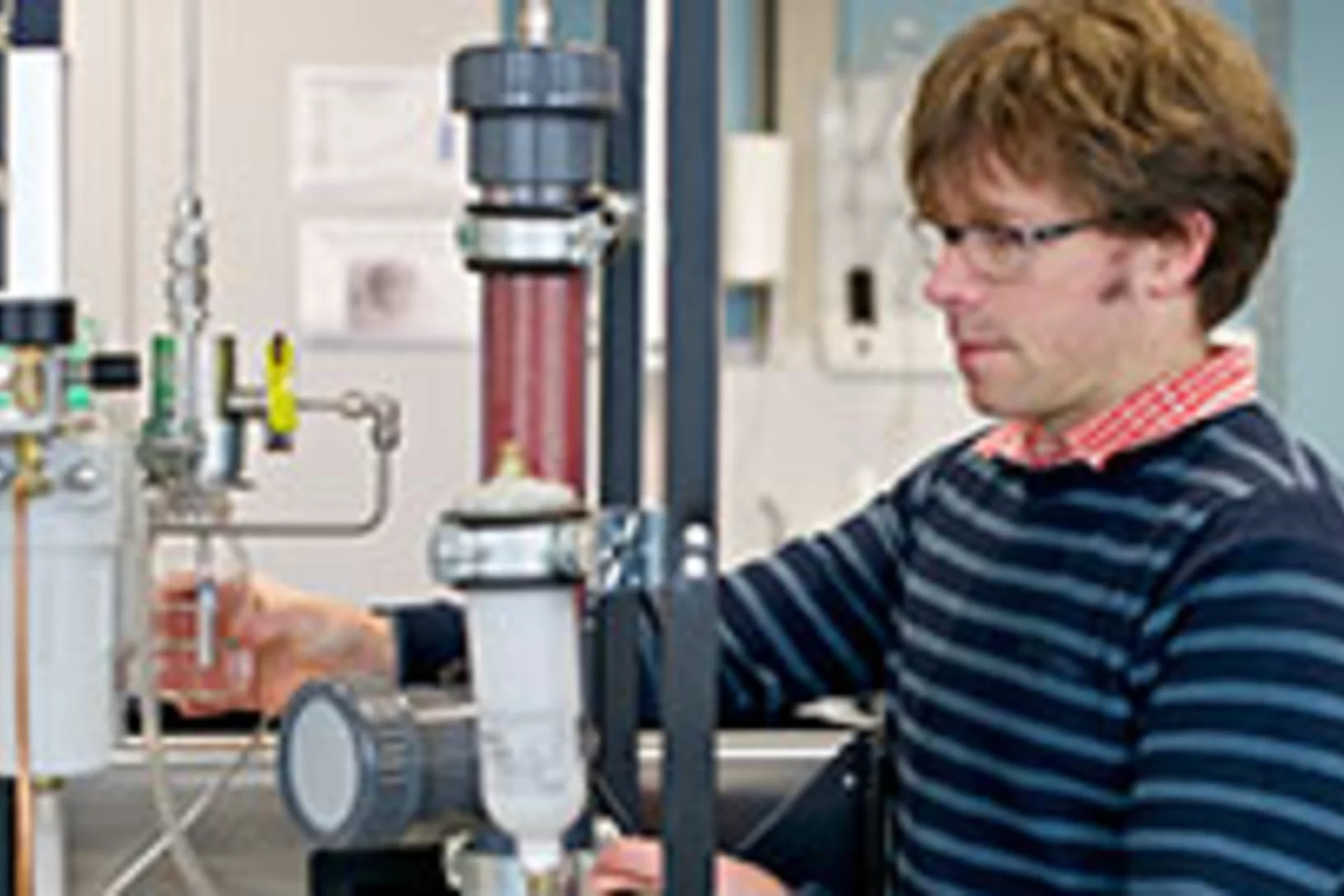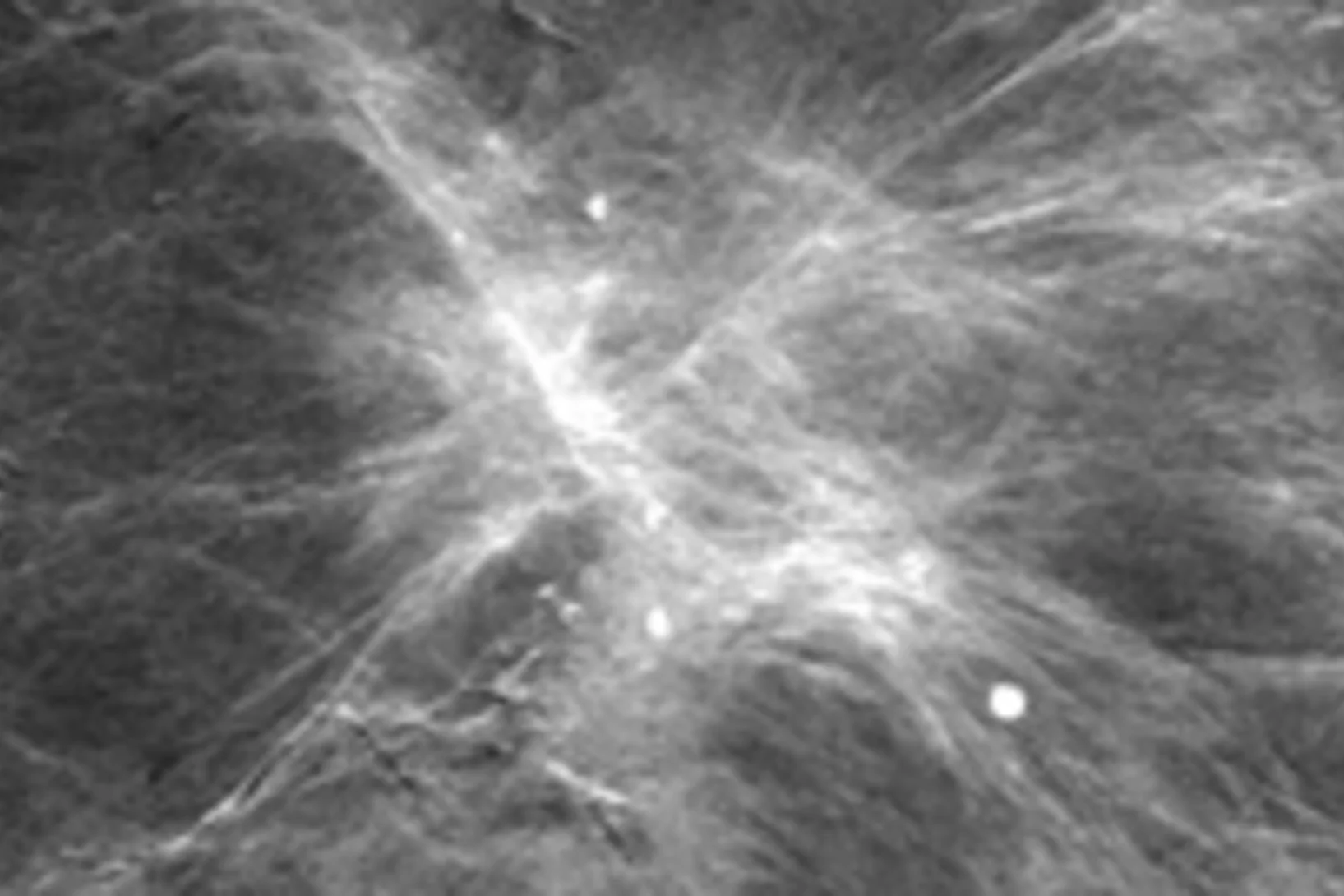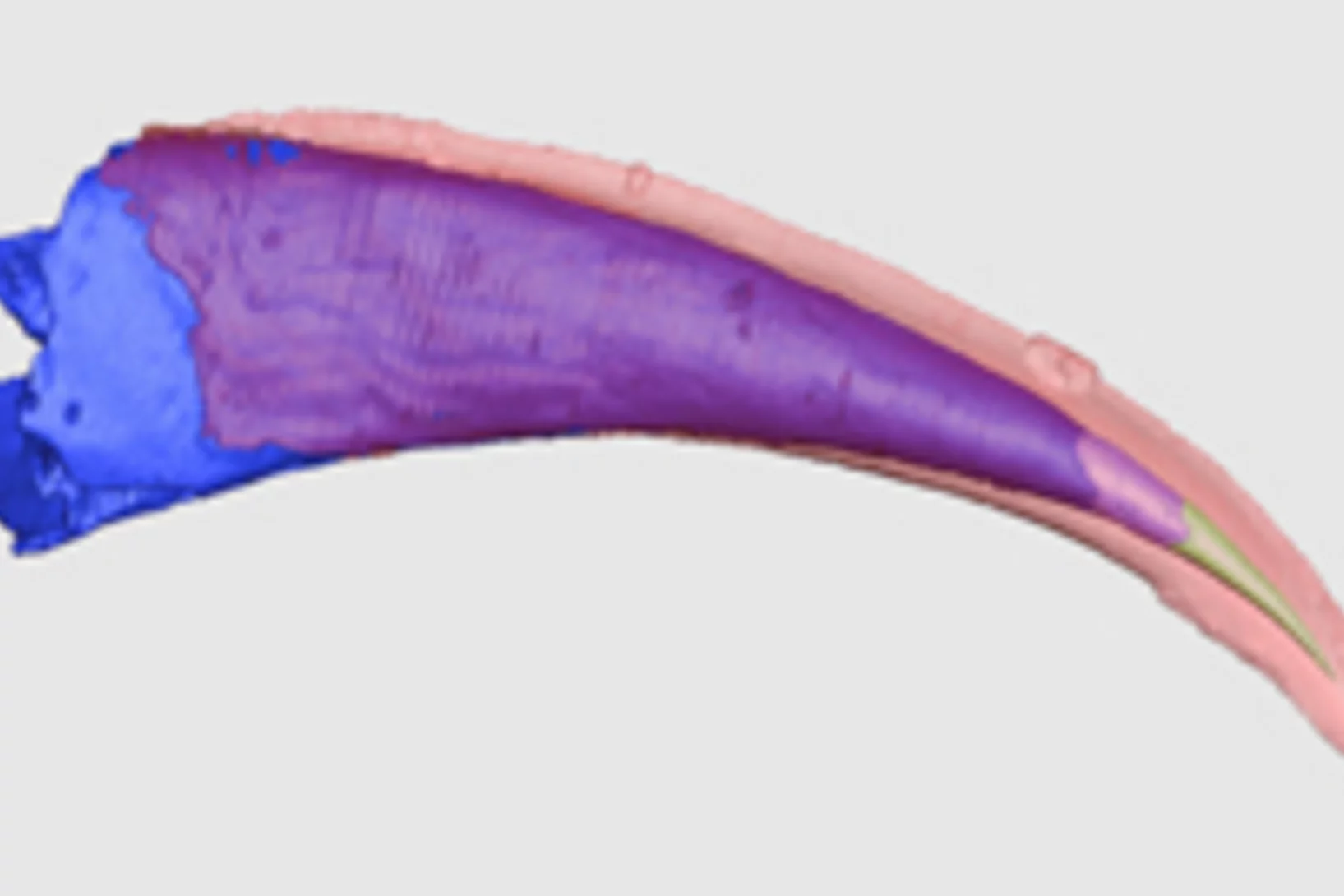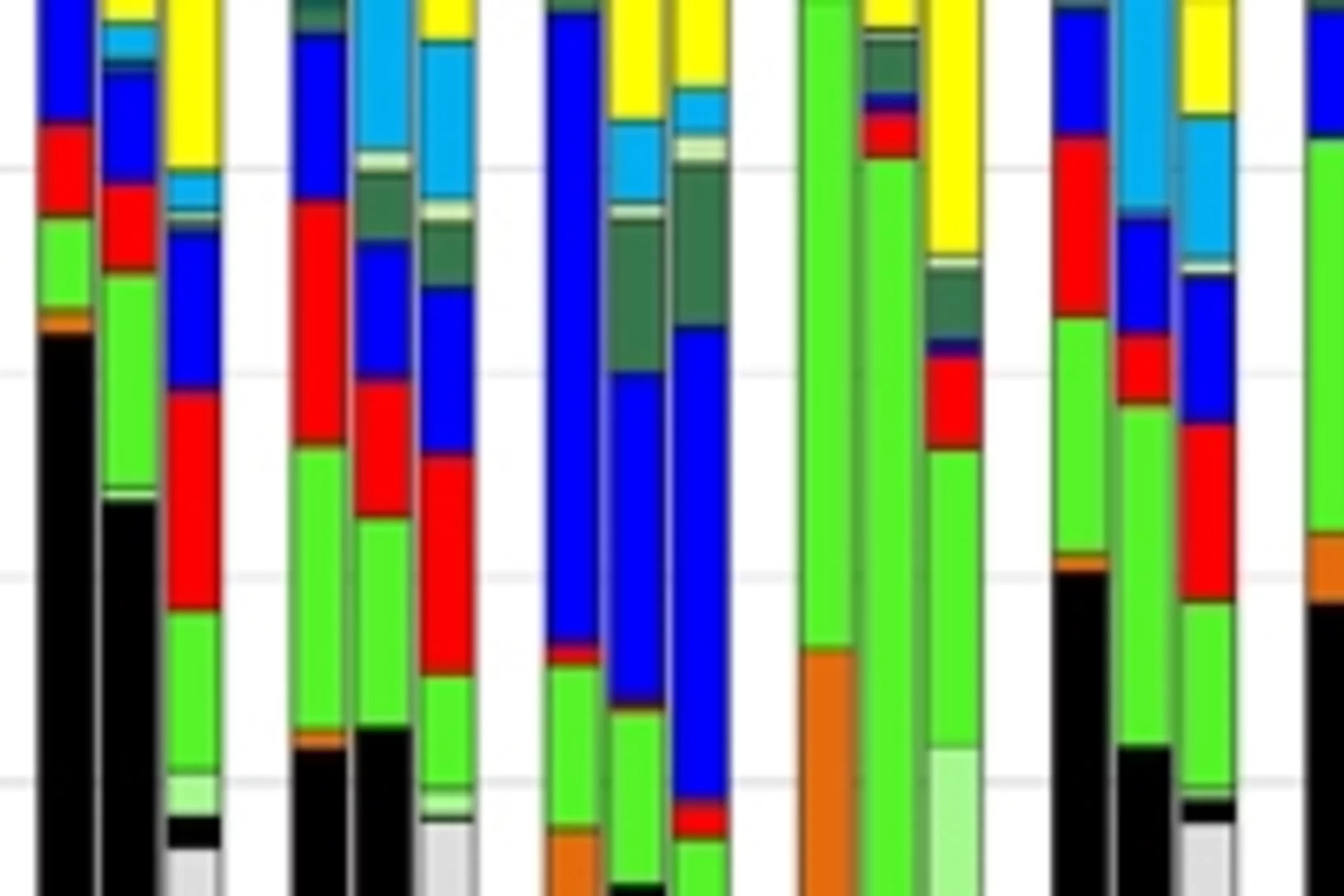Magnets made of non-magnetic metals
For the first time, an international research team has demonstrated how to generate magnetism in metals that aren’t naturally magnetic, such as copper. The discovery could help develop novel magnets for a wide range of technical applications. Crucial measurements to understand this phenomenon were carried out at PSI à the only place where magnetic processes inside materials can be studied in sufficient detail.
Particulate matter from modern gasoline engines damages our lungs
For years, studies have proved that fine dust from petrol engines can damage our health. Modern engine technology does not help, either, as researchers from the University of Bern and the Paul Scherrer Institute (PSI) reveal.
Nanometres in 3D
Scientists at the Paul Scherrer Institute and ETH Zurich have created 3D images of tiny objects showing details down to 25 nanometres. In addition to the shape, the scientists determined how particular chemical elements were distributed in their sample and whether these elements were in a chemical compound or in their pure state.
Gasoline beats mining
Until it was banned, leaded gasoline dominated the manmade lead emissions in South AmericaLeaded gasoline was a larger emission source of the toxic heavy metal lead than mining in South America à even though the extraction of metals from the region’s mines historically released huge quantities of lead into the environment. Researchers from the Paul Scherrer Institute PSI and the University of Bern have discovered evidence of the dominance of leaded gasoline based on measurements in an ice core from a Bolivian glacier. The scientists found that lead from road traffic in the neighbouring countries polluted the air twice as heavily as regional mining from the 1960s onwards. The study is to be published in the journal Science Advances on 6 March 2015.
New laser for computer chips
Germanium-Zinn-Halbleiterlaser lässt sich direkt auf Siliziumchips aufbringenWinzige Laser, die in Computerchips aus Silizium eingebaut werden, sollen in Zukunft die Kommunikation innerhalb der Chips und zwischen verschiedenen Bauteilen eines Computers beschleunigen. Lange suchten Experten nach einem dafür geeigneten Lasermaterial, das sich mit dem Fertigungsprozess von Siliziumchips vereinbaren lässt. Wissenschaftler des Forschungszentrums Jülich und des Paul Scherrer Instituts PSI haben hier nun einen wichtigen Fortschritt erzielt.This news release is only available in German.
Batman lights the way to compact data storage
Researchers at the Paul Scherrer Institute (PSI) have succeeded in switching tiny, magnetic structures using laser light and tracking the change over time. In the process, a nanometre-sized area bizarrely reminiscent of the Batman logo appeared. The research results could render data storage on hard drives faster, more compact and more efficient.
Shortcut to protein portraits
All living organisms, from bacteria to humans, rely on proteins to perform their vital functions. How these proteins accomplish their tasks depends on their structure. Researchers from the Paul Scherrer Institute have now devised a novel method to determine the crystal structure of proteins using X-ray light, which could also hasten the development of new drugs in future. The study will be published in the journal Nature Methods on 15 December.
When thawing glaciers release pollutants
As glaciers increasingly melt in the wake of climate change, it is not only the landscape that is affected. Thawing glaciers also release many industrial pollutants stored in the ice into the environment. Now, within the scope of a Swiss National Science Foundation project, researchers from the Paul Scherrer Institute (PSI), Empa, ETH Zurich and the University of Berne have measured the concentrations of a class of these pollutants à polychlorinated biphenyls (PCB) à in the ice of an Alpine glacier accurately for the first time.
Puzzling new behaviour observed in high-temperature superconductors
New effect might be important for emergence of High-Temperature SuperconductivityAn international team of researchers has observed a new, unexpected kind of behaviour in copper-based high-temperature superconductors. Explaining the new phenomenon à an unexpected form of collective movement of the electrical charges in the material à poses a major challenge for the researchers. A success in explaining the phenomenon might be an important step toward understanding high-temperature superconductivity in general. The crucial experiments were conducted at the Paul Scherrer Institute.
Useful for spintronics: Big surprises in a thin surface region
The need for ever faster and more efficient electronic devices is growing rapidly, and thus the demand for new materials with new properties. Oxides, especially ones based on strontium titanate (SrTiO3), play an important role here. A collaborative project headed by scientists from the PSI has now revealed properties of strontium titanate that make it an important base material for applications in spintronics.
Airpocalypse explained
The causes of China's record level fine particulate pollution in winter 2013 At the beginning of 2013 a greyish-brown blanket of smog lay over large areas of China for several months. The fine particle pollution was higher by 1 to 2 orders of magnitude than the levels normally measured in Western Europe and the United States. An international team of researchers under the lead of the Paul Scherrer Institute PSI and the Institute of Earth Environment, Chinese Academy of the Sciences revealed the causes of the airpocalypse. The study published in the journal Nature also describes what steps are to be taken to prevent an environmental crisis of this kind in the future.
Energiewende in Reinkultur – in Wädenswil zu bestaunen
Der am Paul Scherrer Institut PSI entwickelte Prozess der hydrothermalen Methanierung von wässriger Biomasse erreicht einen wichtigen Meilenstein: Dank der Zusammenarbeit im neuen Kompetenzzentrum des Bundes für Bioenergie BIOSWEET konnten Forschende des PSI, der ZHAW, der ETH Lausanne, der Empa und der Hochschule für Technik Rapperswil die technische Machbarkeit der Methanherstellung aus Mikroalgen demonstrieren. Der dazu verwendete Algenbioreaktor sowie die Anlage zur Methanierung der Algen können am 24. September auf dem Campus Grüental der ZHAW in Wädenswil besichtigt werden. Für Medienschaffende gibt es von 14:00 bis 14:30 eine spezielle Führung.This news release is only available in German.
New material generated with light
PSI researchers garner experience for SwissFEL experimentsAided by short laser flashes, researchers at the Paul Scherrer Institute have managed to temporarily change a material’s properties to such a degree that they have à to a certain extent àcreated a new material. This was done using the x-ray laser LCLS in California. Once the PSI x-ray laser SwissFEL is up and running, experiments of this kind will also be possible at PSI.
Jurassic Welsh mammals were picky eaters, study finds
New analyses of tiny fossil mammals from South Wales are shedding light on the function and diets of our earliest ancestors, a team led by researchers from the Universities of Bristol and Leicester report in the journal Nature. The team used CT scanning with synchrotron X-rays at PSI’s Swiss Light Source to reveal in unprecedented detail the internal anatomy of the mammals’ tiny jaws.
Insulator makes electrons move in an ordered way
Researchers at the PSI, the EPFL and the Chinese Academy of Science, have proven that the material SmB6 shows all the properties of a so called topological insulator à a material with electric currents flowing along its surface with all of them being polarized. Here, the property is very robust, i.e. the only current that can flow is spin polarized and is not easily destroyed by small irregularities in the structure or composition of the material. Spin polarized currents are necessary for spintronics, electronics using the electrons’ spin.
Ice in fuel cells imaged directly for the first time
Researchers from the Paul Scherrer Institute (PSI) have succeeded in imaging the distribution of frozen and liquid water in a hydrogen fuel cell directly for the first time. They applied a new imaging technique that uses successively two beams with different neutron energies to distinguish between areas with liquid water and those with ice extremely reliably. The method therefore opens up the prospect of studying one of the main problems of using fuel cells to power vehicles: ice can clog the pores in the fuel cells and affect their performance. The PSI scientists’ results will be published in the journal Physical Review Letters on 16 June 2014.
Sixteen nanometres in 3D
Researchers from the Paul Scherrer Institut (PSI) have devised a method that opens up new scales of tomographic imaging and will thus allow in the future highly resolved measurements of biological and materials science specimens. With the aid of a special prototype instrument at the Swiss Light Source (SLS), they achieved a 3D resolution of sixteen nanometres in a large sample and thus set a new world record in X-ray tomography.
New insight into photosynthesis
The way that algae and plants respond to light has been reinterpreted based on results from recent experiments. Under particular lighting conditions during photosynthesis, the well-ordered stacking and alignment of light-sensitive membranes in the algae are disrupted. There is no significant movement of the membrane embedded light harvesting proteins, which rather become largely inactive. These new findings challenge widely accepted views of how algae respond to light where the light harvesting proteins were thought to move around the membranes.
Cloud formation takes ingredients from the forest
Scientists know that clouds have a net cooling effect on our planet but the exact magnitude of that cooling effect is not exactly known. A new study by the CLOUD experiment (Cosmics Leaving OUtdoor Droplets) at CERN sheds light on the very first step of cloud formation, thereby contributing to a better understanding of the cloud-climate connection. The study was led by scientists at the Paul Scherrer Institute (PSI) and was published on 16 May 2014 in the journal Science
Phase contrast improves mammography
Phase contrast X-ray imaging has enabled researchers at ETH Zurich, the Paul Scherrer Institute (PSI) and the Kantonsspital Baden to perform mammographic imaging that allows greater precision in the assessment of breast cancer and its precursors. The technique could improve biopsy diagnostics and follow-up.
Unassuming rampant polluters on two wheels
In some towns small mopeds cause more air pollution than carsNot cars or trucks, but mopeds with their two-stroke engines are the main source of fine particles and other air contaminants in many towns in Asia, Africa and southern Europe. This is revealed by the study of an international research team headed up by researchers at the Paul Scherrer Institute PSI. The reasons for the high emissions are the combustion properties in two-stroke engines and the overly lenient emission requirements for small two-wheelers. The study findings are to be published on 13 May 2014 in the journal Nature Communications.
Astral matter from the Paul Scherrer Institute
Processes in stars recreated with isotopes from PSIIsotopes that otherwise only naturally exist in exploding stars à supernovae à are formed at the Paul Scherrer Institute’s research facilities. This enables processes that take place inside the stars to be recreated in the lab. For instance, an international team of researchers used the titanium isotope Ti-44 to study one such process at CERN in Geneva. In doing so, it became evident that it is less effective than was previously believed and the previous theoretical calculations of processes in stars need to be corrected.
Quantum melting
Changes to the aggregate state triggered by quantum effects à in physically correct terms, quantum phase transitions à play a role in many astonishing phenomena in solids, such as high-temperature superconductivity. Researchers from Switzerland, Great Britain, France and China have now specifically altered the magnetic structure of the material TlCuCl3 by exposing it to external pressure and varying this pressure. With the aid of neutrons, they were able to observe what happens during a quantum phase transition, where the magnetic structure melts quantum-physically.
Fuel cell know-how from the Paul Scherrer Institute at the core of the SBB minibar
On 4 April 2014 SBB is to launch a new minibar model in its Intercity trains. A fuel cell system including know-how of the Paul Scherrer Institute will also be on board. It will ensure that despite the limited space the minibar will have enough power to brew capuccinos and latte macchiatos, too.
X-rays film inside live flying insects – in 3D
Scientists have used a particle accelerator to obtain high-speed 3D X-ray visualizations of the flight muscles of flies. The team from Oxford University, Imperial College, and the Paul Scherrer Institute (PSI) developed a groundbreaking new CT scanning technique at the PSI’s Swiss Light Source to allow them to film inside live flying insects. The movies offer a glimpse into the inner workings of one of nature’s most complex mechanisms, showing that structural deformations are the key to understanding how a fly controls its wingbeat.
Observed live with x-ray laser: electricity controls magnetism
Researchers from ETH Zurich and the Paul Scherrer Institute PSI demonstrate how the magnetic structure can be altered quickly in novel materials. The effect could be used in efficient hard drives of the future.
The proton accelerator at the Paul Scherrer Institute: forty years of top-flight research
Materials research, particle physics, molecular biology, archaeology à for the last forty years, the Paul Scherrer Institute’s large-scale proton accelerator has made top-flight research possible in a number of different fields.
Superconductivity switched on by magnetic field
Superconductivity and magnetic fields are normally seen as rivals à very strong magnetic fields normally destroy the superconducting state. Physicists at the Paul Scherrer Institute have now demonstrated that a novel superconducting state is only created in the material CeCoIn5 when there are strong external magnetic fields. This state can then be manipulated by modifying the field direction. The material is already superconducting in weaker fields, too. In strong fields, however, an additional second superconducting state is created which means that there are two different superconducting states at the same time in the same material.
Experiments in the clouds – how soot influences the climate
PSI-researcher Martin Gysel receives prestigious European funding (ERC Consolidator Grant) for his studies on the role of soot in cloud formation and global warming.
The Paul Scherrer Institute runs two of the energy competence centres of the Swiss government
As part of the Energy Strategy 2050 the Swiss government and parliament have decided to increase support for energy research in Switzerland. This includes the setting up of seven interuniversity networked Swiss Competence Centres in Energy Research (SCCERs). In the SCCERs ETH Domain institutions, the universities and the universities of the applied sciences are to join forces with industrial partners to develop new competencies and solutions in the decisive action areas of the shift in energy policy. The Paul Scherrer Institute PSI will act as the leading house in two of the SCCERs à storage and biomass à that have already been given the green light. They will begin their work in 2014.
How botox binds to neurons
Botox is a highly dangerous toxin that causes paralysis. In cosmetic applications it is used to temporarily eliminate wrinkles and in medicine as a treatment for migraine or to correct strabismus. An international research team has now established how the toxin molecule binds to the neuron whose activity is then blocked by the poison. The findings may be useful for the development of improved drugs with a lower risk of overdosage.
Electrons with a "split personality"
Above the transition temperature, some electrons in the superconducting material La1.77Sr0.23CuO4 behave as if they were in a conventional metal, others as in an unconventional one à depending on the direction of their motion. This is the result of experiments performed at the SLS. The discovery of this anisotropy makes an important contribution towards understanding high-temperature superconductors. The effect will also have to be taken into account in future experiments and theories of high-temperature superconductors.
A promising new method for the diagnosis of breast cancer
A new mammography procedure that could generate substantial added value for the diagnosis of breast cancer in medical practice has just been published in the scientific journal Investigative Radiology. The method was developed at PSI in cooperation with the Certified Breast Centre at the Kantonsspital (cantonal hospital in) Baden and Philips as an industrial partner and is making the tiniest tissue changes visible. This has the potential to improve the early detection of breast cancer. Further studies in women suffering from breast cancer are to prove in a definitive manner the added value of the method.
PSI-researcher Helena Van Swygenhoven awarded prestigious ERC Grant
Helena Van Swygenhoven, materials researcher at the Paul Scherrer Institute and professor at the Swiss Federal Institute of Technology in Lausanne (EPFL), has been awarded an ERC Advanced Grant. This prestigious EUR 2.5 million grant from the European Research Council will enable Van Swygenhoven to launch the new research project MULTIAX. Under this project, she will investigate what happens in metallic materials during deformation - a question important for the production processes for car parts. Furthermore, the project will also develop new methods that can be used to study materials at large research facilities. These methods will be accessible to experts from research and industry.
Die Ursprünge der ersten Fische mit Zähnen
Mit Hilfe von Röntgenlicht aus der Synchrotron Lichtquelle Schweiz des PSI ist es Paläontologen der Universität Bristol gelungen, ein Rätsel um den Ursprung der ersten Wirbeltiere mit harten Körperteilen zu lösen. Sie haben gezeigt, dass die Zähne altertümlicher Fische (der sogenannten Conodonten) unabhängig von den Zähnen und Kiefern heutiger Wirbeltiere entstanden sind. Die Zähne dieser Wirbeltiere haben sich vielmehr aus einem Panzer entwickelt, der dem Schutz vor den Conodonten, den ersten Raubtieren, diente.
A glimpse at the future of global energy supply
How will the world secure its energy supply in 2050 and what are the possible economic, ecological and social implications of different pathways and choices? These questions are answered by researchers at the Paul Scherrer Institute PSI in cooperation with the World Energy Council WEC in a study examining two scenarios covering different dimensions of economic, social, policy and technology development. The results of the study, which has now been concluded, will be presented from 13 to 17 October at the WEC’s World Energy Congress in the South Korean town of Daegu
Particle formation in the atmosphere – further aspect unveiled via the CLOUD experiment at CERN
Clouds consist of cloud droplets that are formed from tiny particles floating in the atmosphere. How these particles develop, however, largely remains a mystery. The formation of particles from amines and sulphuric acid has now been described for the first time à a milestone in atmospheric research.
Kanton und Paul Scherrer Institut stellen PARK innovAARE vor
Hightech-Zone in Villigen als idealer Netzwerkstandort für schweizerischen InnovationsparkDer Kanton Aargau und das Paul Scherrer Institut (PSI) stellen das Konzept PARK innovAARE für einen Netzwerkstandort des schweizerischen Innovationsparks vor. Die unmittelbare Nähe zum PSI mit seinen Grossforschungsanlagen macht das untere Aaretal zu einem idealen Standort, wo Spitzenforschung und unternehmerische Innovationstätigkeit sich beflügeln.This news release is only available in French and German.
Magnetisation controlled at picosecond intervals
A terahertz laser developed at the Paul Scherrer Institute makes it possible to control a material’s magnetisation precisely at a timescale of picoseconds. In their experiment, the researchers shone extremely short light pulses from the laser onto a magnetic material. The light pulse’s magnetic field was able to deflect the magnetic moments from their idle state in such a way that they exactly followed the change of the laser’s magnetic field with only a minor delay. The terahertz laser used in the experiment is one of the strongest of its kind in the world.
Five times less platinum: fuel cells could become economically more attractive thanks to novel aerogel catalyst.
Fuel cells that convert hydrogen into power and only produce pure water as a by-product have the potential to lead individual mobility into an environmentally friendly future. The Paul Scherrer Institute (PSI) has been researching and developing such low-temperature polymer electrolyte fuel cells for more than 10 years and initial field tests have already demonstrated the successful use of these fuel cells in cars and buses. However, further research is still required to improve the durability and economic viability of the technology. An international team of researchers involving the PSI has now manufactured and characterised a novel nanomaterial that could vastly increase the efficiency and shelf-life of these fuel cells à as well as reduce material costs.
Pancreas: new procedure detects tumours more efficiently
Better than CT and MRI: researchers at the Inselspital Berne, the University Hospital Basel and the Paul Scherrer Institute have devised a new method to detect small tumours in the pancreas.
Ferromagnetic and antiferromagnetic – at the same time
Researchers from the Paul Scherrer Institute (PSI) have made thin, crystalline layers of the material LuMnO3 that are both ferromagnetic and antiferromagnetic at the same time. The LuMnO3 layer is ferromagnetic close to the interface with the carrier crystal. As the distance increases, however, it assumes the material’s normal antiferromagnetic order while the ferromagnetism steadily becomes weaker. The possibility of producing two different magnetic orders within a material could be of major technical importance.
Weltmeister aus dem PSI
Silvan Melchior, Elektronik-Lernender vom PSI, hat bei der Weltmeisterschaft der Berufslernenden in Leipzig die Goldmedaille in seinem Fachgebiet gewonnen. Insgesamt sind in dem Fach 16 Lernende aus 16 Ländern angetreten. Insgesamt hat das Schweizer Team mit neun Gold-, drei Silber-, fünf Bronzemedaillen sowie 18 Diplomen den zweiten Gesamtplatz hinter Korea belegt.This news release is only available in German.
Laying of the corner stone for the new large research facility SwissFEL
At the ceremony on 3 July 2013, not only did the PSI lay the corner stone for the new large research facility SwissFEL, but it also paved the way for the continuation of twenty-five years of successful research at the institute.
ecoinvent – The World’s Leading LCA Database Launches Version 3.0
The life cycle inventory database ecoinvent forms the basis for life cycle assessment projects, eco-design, and product environmental information. Since 2003, ecoinvent has enabled companies to manufacture their products more in harmony with the environment, policymakers to implement new policies, and consumers to adopt more environmentally friendly behaviour. The new version 3.0 is a further milestone in life cycle assessment: new and updated data offer ecoinvent users a greater number of possible applications in the areas of e.g. chemical production, foodstuffs, vegetables and electricity.
Tiny Magnets as a Model System
Scientists use nano-rods to investigate how matter assemblesTo make the magnetic interactions between the atoms visible, scientists at the Paul Scherrer Institute PSI have developed a special model system. It is so big that it can be easily observed under an X-ray microscope, and mimics the tiniest movements in Nature. The model: rings made from six nanoscale magnetic rods, whose north and south poles attract each other. At room temperature, the magnetisation direction of each of these tiny rods varies spontaneously. Scientists were able to observe the magnetic interactions between these active rods in real time. These research results were published on May 5 in the journal Nature Physics.
Germanium – zum Leuchten gezogen
Forscher des PSI und der ETH Zürich haben mit Kollegen vom Politecnico di Milano in der aktuellen Ausgabe der wissenschaftlichen Fachzeitschrift "Nature Photonics" eine Methode erarbeitet, einen Laser zu entwickeln, der schon bald in den neuesten Computern eingesetzt werden könnte. Damit könnte die Geschwindigkeit, mit der einzelne Prozessorkerne im Chip miteinander kommunizieren, drastisch erhöht werden. So würde die Leistung der Rechner weiter steigen.This news release is only available in German.
Memory effect now also found in lithium-ion batteries
Lithium-ion batteries are high performance energy storage devices used in many commercial electronic appliances. Certainly, they can store a large amount of energy in a relatively small volume. They have also previously been widely believed to exhibit no memory effect. That’s how experts call a deviation in the working voltage of the battery, caused by incomplete charging or discharging, that can lead to only part of the stored energy being available and an inability to determine the charge level of the battery reliably. Scientists at the Paul Scherrer Institute PSI, together with colleagues from the Toyota Research Laboratories in Japan have now however discovered that a widely-used type of lithium-ion battery has a memory effect. This discovery is of particularly high relevance for advances towards using lithium-ion batteries in the electric vehicle market. The work was published today in the scientific journal Nature Materials.

